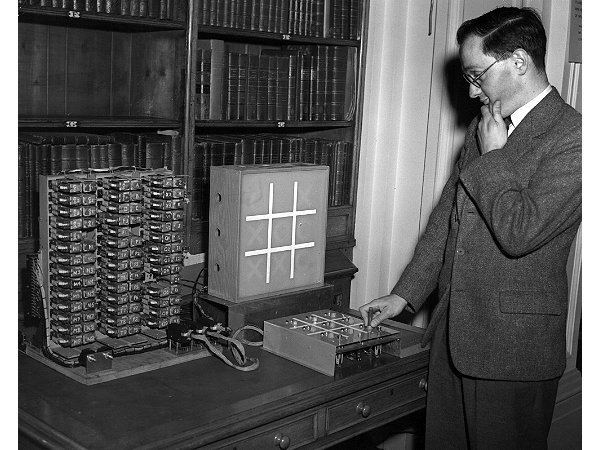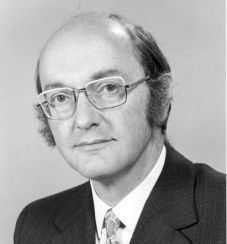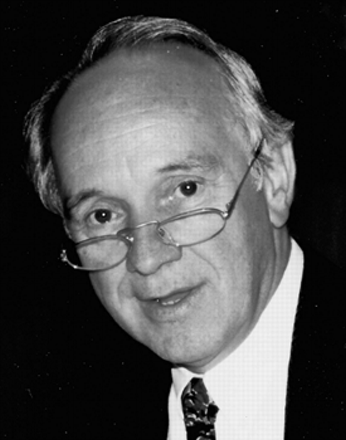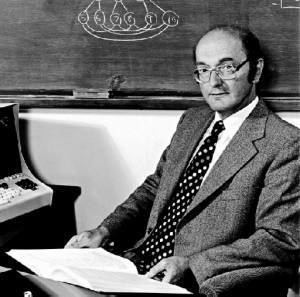Nationality Welsh Name Donald Davies Ex-spouse Diane Burton Known for Packet switching | Role Computer scientist | |
 | ||
Born 7 June 1924Treorchy, Wales ( 1924-06-07 ) Died May 28, 2000, Esher, United Kingdom Books Security for Computer Networks: An Introduction to Data Security in Teleprocessing and Electronic Funds Transfer Similar People Paul Baran, Leonard Kleinrock, Lawrence Roberts | ||
Donald davies standing on the shoulders of giants
Donald Watts Davies, CBE, FRS (7 June 1924 – 28 May 2000) was a Welsh computer scientist who was employed at the UK National Physical Laboratory (NPL). In 1965 he developed the concept of packet switching, which is today the dominant basis for data communications in computer networks worldwide, and implemented it in the NPL network. This was independent of the work of Paul Baran in the United States who had a similar idea in the early 1960s. The ARPANET project credited Davies primarily for his influence.
Contents
- Donald davies standing on the shoulders of giants
- Donald Davies Wikipedia audio article
- Early life
- National Physical Laboratory
- Packet switched network design
- Later work
- Awards and honours
- Family
- Books
- References

Donald Davies | Wikipedia audio article
Early life

Davies was born in Treorchy in the Rhondda Valley, Wales. His father, a clerk at a coalmine, died a few months later, and his mother took Donald and his twin sister back to her home town of Portsmouth, where he went to school.

He received a BSc degree in physics (1943) at Imperial College London, and then joined the war effort working as an assistant to Klaus Fuchs on the nuclear weapons Tube Alloys project at Birmingham University. He then returned to Imperial taking a first class degree in mathematics (1947); he was also awarded the Lubbock memorial Prize as the outstanding mathematician of his year.
In 1955, he married Diane Burton; they had a daughter and two sons.
National Physical Laboratory
From 1947, he worked at the National Physical Laboratory (NPL) where Alan Turing was designing the Automatic Computing Engine (ACE) computer. It is said that Davies spotted mistakes in Turing's seminal 1936 paper On Computable Numbers, much to Turing's annoyance. These were perhaps some of the first "programming" bugs in existence, even if they were for a theoretical computer, the universal Turing machine. The ACE project was overambitious and floundered, leading to Turing's departure. Davies took the project over and concentrated on delivering the less ambitious Pilot ACE computer, which first worked in May 1950. A commercial spin-off, DEUCE was manufactured by English Electric Computers and became one of the best-selling machines of the 1950s.
Davies also worked on applications of traffic simulation and machine translation. In the early 1960s, he worked on government technology initiatives designed to stimulate the British computer industry.
Packet switched network design
In 1966 he returned to the NPL at Teddington just outside London, where he headed and transformed its computing activity. He became interested in data communications following a visit to the Massachusetts Institute of Technology, where he saw that a significant problem with the new time-sharing computer systems was the cost of keeping a phone connection open for each user.
Davies' key insight came in the realisation that computer network traffic was inherently "bursty" with periods of silence, compared with relatively constant telephone traffic. His work on packet switching, presented by his colleague Roger Scantlebury, initially caught the attention of the developers of ARPANET, a US defence network, at a conference in Gatlinburg, Tennessee, in October 1967. In Scantlebury's report following the conference, he noted "It would appear that the ideas in the NPL paper at the moment are more advanced than any proposed in the USA". Davis first presented his own ideas on packet switching at a conference in Edinburgh on 5 August 1968.
In 1965, Davies coined the term packet switching for the concept of dividing computer messages into packets that are routed independently, and possibly via differing routes, across a network and are reassembled at the destination, a concept previously known under a cryptic term distributed adaptive message block switching by Paul Baran. He used the term "packets" as it was capable of being translated into languages other than English without compromise. At NPL Davies helped build a packet-switched network (Mark I NPL network). It was replaced with the Mark II in 1973, and remained in operation until 1986, influencing other research in the UK and Europe.
Larry Roberts of the Advanced Research Projects Agency in the United States applied Davies' concepts of packet switching in the late 1960s for the ARPANET, which went on to become a predecessor to the Internet.
Baran was happy to acknowledge that Davies had come up with the same idea as him independently. In an e-mail to Davies he wrote
You and I share a common view of what packet switching is all about, since you and I independently came up with the same ingredients.
Leonard Kleinrock, a contemporary working on analysing data flow, also reached similar conclusions when he developed a theoretical basis for the operation of packet networks in his proposal for a PhD thesis in 1961. He published his ideas in that year. However, Kleinrock's contribution to packet switching is disputed by some, including Robert Taylor, Baran and Davies. The U.S. National Inventors Hall of Fame, which recognizes inventors who hold a U.S. patent of highly significant technology, records Donald Davies and Paul Baran as the inventors of digital packet switching.
Later work
Davies relinquished his management responsibilities in 1979 to return to research. He became particularly interested in computer network security. He retired from the NPL in 1984, becoming a leading consultant on data security to the banking industry. Together with David O. Clayden, they designed the Message Authenticator Algorithm (MAA), an early Message Authentication Code that was adopted as international standard ISO 8731-2 in 1987. In 1987, he became a visiting professor at Royal Holloway and Bedford New College.
Awards and honours
Davies was appointed a Distinguished Fellow of the British Computer Society in 1975, a CBE in 1983 and a Fellow of the Royal Society in 1987. In 2007, Davies was inducted into the National Inventors Hall of Fame, and in 2012 he was inducted into the Internet Hall of Fame by the Internet Society. A blue plaque commemorating Davies was unveiled in Treorchy in July 2013.
Family
Davies was survived by his wife Diane, a daughter and two sons.
